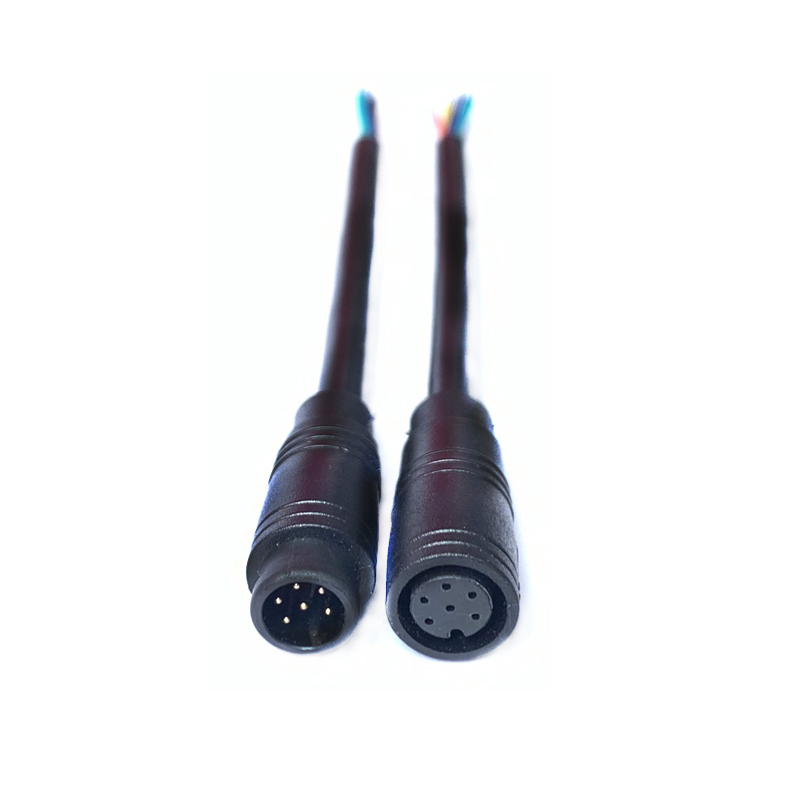News


News

How to Choose the Right 6-Pin Waterproof Connector: A Complete Guide
Release time:2025-04-03
viewed:280
6-pin waterproof connectors are essential for ensuring reliable electrical connections in harsh environments, from industrial robots to underwater equipment. This guide breaks down the key factors to consider when selecting a 6-pin waterproof connector, helping you balance performance, durability, and cost for your specific application.

Waterproof Rating:
IP67: Protects against temporary submersion (e.g., outdoor lighting in rain).
IP68: Submersible up to 1m depth for extended periods (e.g., underwater sensors).
Temperature Range:
Industrial: -40°C to +125°C.
Automotive: -40°C to +150°C.
Chemical Exposure: Choose stainless steel (316L) or PEEK housings for oil, acid, or saltwater environments.
Voltage/Current:
High-power pins: 10A/600V for motors or actuators.
Signal pins: 24V/0.5A for sensors or communication.
Signal Type:
Digital (CAN bus, Ethernet).
Analog (4–20mA, 0–10V).
Example Configurations:
Industrial Robot: 2 pins (24V/5A power) + 4 pins (encoder/safety signals).
EV Charger: 3 pins (220V AC power) + 2 pins (PLC communication) + 1 pin (ground).
Signal Isolation: Physically separate or shield power and signal pins to prevent interference.
Housing:
Nylon (PA66): Lightweight, impact-resistant (general industrial use).
Stainless Steel (316L): Corrosion-proof (marine/chemical plants).
PEEK: High-temperature (200°C+), chemical-resistant.
Contacts:
Gold-Plated: Low resistance, oxidation-resistant (signal transmission).
Silver-Plated: High-current capacity (power transmission).
Tin-Plated: Cost-effective (dry environments).
Mating Cycles: Industrial-grade (≥500 cycles), automotive-grade (≥1,000 cycles).
Locking Mechanism:
Threaded Coupling: Vibration-resistant (e.g., factory robots).
Push-Pull: Quick maintenance (e.g., medical devices).
Cable Preparation: Strip wires to 6–8mm for optimal contact.
Sealing Checks:
Ensure O-rings are intact and lubricated with silicone grease.
Tighten threads to manufacturer’s torque specs (e.g., 0.8–1.2 N·m).
Shielding: Ground metal housings and fully wrap shielding layers.
Routine Inspections: Check seals and contacts every 6 months.
Cleaning: Wipe contacts with isopropyl alcohol; avoid abrasive tools.
Troubleshooting:
Water Ingress: Disconnect power, dry components, replace seals.
Signal Noise: Verify shield grounding or upgrade to double-shielded connectors.
Define Environment: Temperature, humidity, chemical exposure.
Assign Pin Functions: Power, signal, ground.
Match IP Rating: IP67 for rain, IP68 for submersion.
Choose Materials: Housing (durability) + contacts (conductivity).
Verify Certifications: UL, CE, ATEX (industry compliance).
Selecting the right 6-pin waterproof connectors ensures seamless performance in demanding conditions. By prioritizing environmental needs, material quality, and industry standards, you can avoid downtime and costly failures.